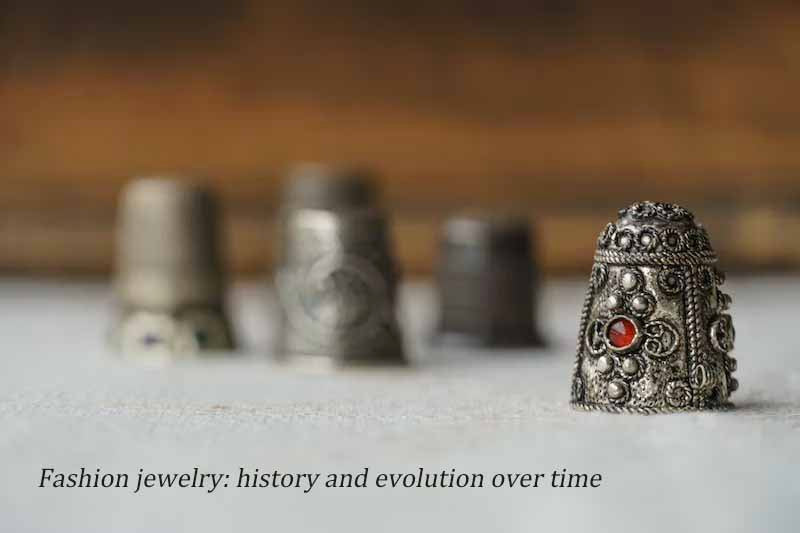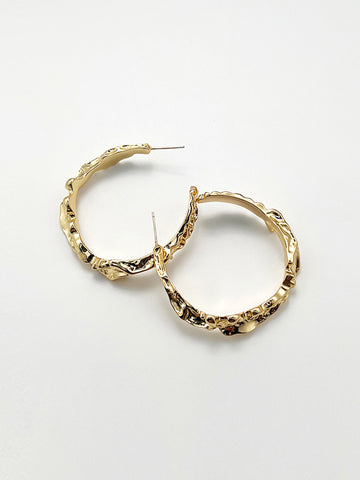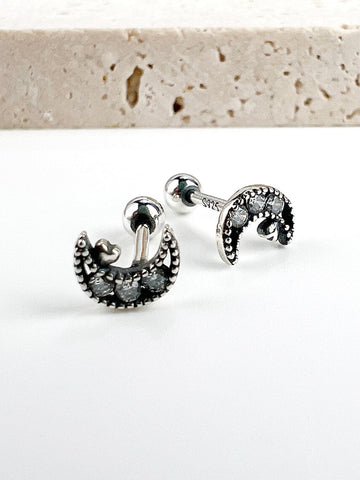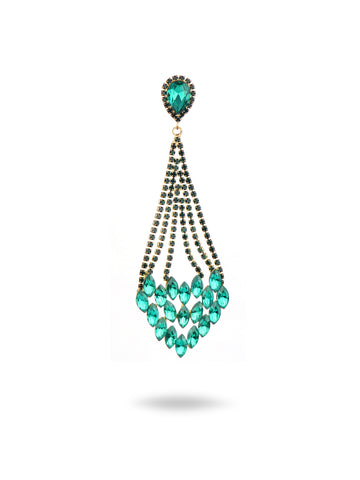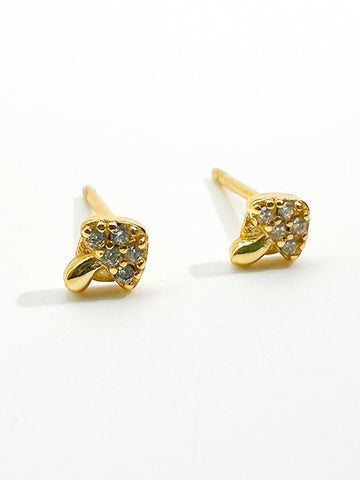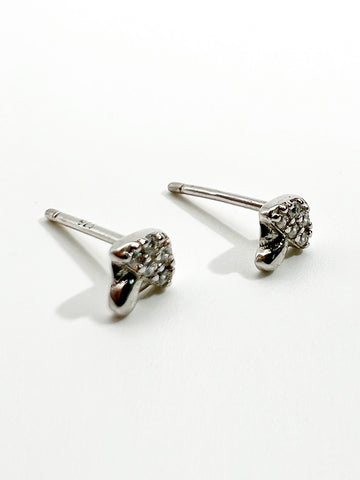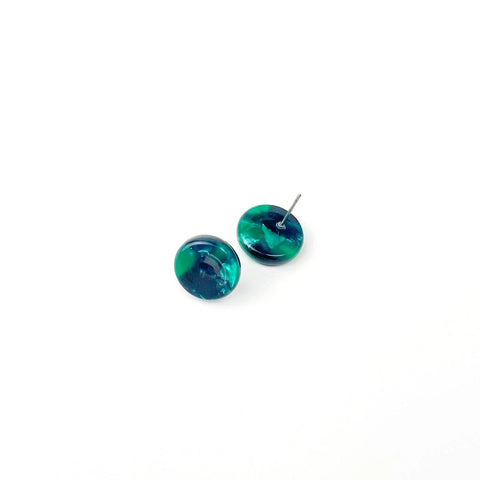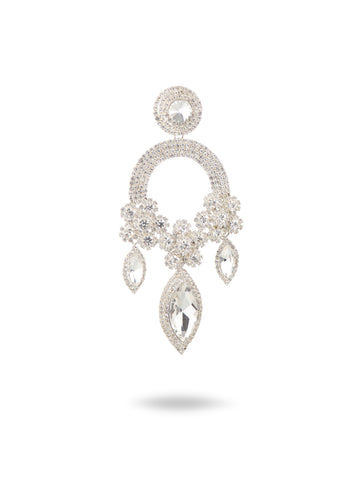Fashion jewelry: history and evolution over time

Fashion jewelry has been an important accessory for people across the world for centuries.
From simple ornaments made of natural materials to intricate pieces crafted with precious metals and gemstones, jewelry has always played an important role in defining fashion and style.
In this article, we will explore the history of fashion jewelry and its evolution over time.
https://www.oraneden.com/collections/earrings/products/open-hoop-earrings
Prehistoric Times
The use of jewelry dates back to prehistoric times when early humans began to use natural materials such as shells, stones, and animal bones to make simple ornaments.
These ornaments were often worn as talismans for good luck and protection or as symbols of social status. As human societies evolved, so did the use of jewelry.
https://www.oraneden.com/collections/earrings/products/la-lune-silver-stud-earrings
Ancient Times
The use of jewelry became more sophisticated in ancient times, as people began to use precious metals such as gold and silver to make ornaments.
The ancient Egyptians were particularly known for their love of jewelry, and they used precious metals and gemstones to make elaborate necklaces, bracelets, and headdresses. The ancient Greeks and Romans also had a penchant for jewelry, and they used it to symbolize wealth and social status.
https://www.oraneden.com/collections/earrings/products/hollow-flower-earrings
Middle Ages
During the Middle Ages, the use of jewelry became more closely tied to religion. Crosses and other religious symbols were often incorporated into jewelry, and gemstones were thought to have healing properties.
The medieval period also saw the emergence of guilds, which were groups of craftsmen who specialized in the production of specific types of jewelry. These guilds helped to standardize the quality of jewelry production and to establish a hierarchy of master craftsmen and apprentices.
https://www.oraneden.com/collections/earrings/products/codi-rhinestone-earrings-crystal
Renaissance
The Renaissance was a time of great artistic and cultural achievement, and jewelry was no exception.
The use of gemstones became more prevalent during this period, and jewelry began to be seen as an art form in its own right. The Italian Renaissance in particular saw the emergence of highly skilled craftsmen who specialized in the production of intricate, handcrafted jewelry.
https://www.oraneden.com/collections/earrings/products/sumeruish-gold-zircon-stud-earrings
Victorian Era
The Victorian era was a time of great innovation in jewelry design. The use of new materials such as glass and enamel allowed for the creation of more intricate and colorful designs.
The period was also marked by a fascination with the natural world, and jewelry often featured motifs such as flowers, leaves, and insects. The discovery of new sources of precious gems and metals also led to a proliferation of jewelry production.
Art Nouveau
The Art Nouveau movement emerged in the late 19th century and was characterized by its emphasis on natural forms and flowing, organic designs.
Jewelry from this period often featured motifs such as flowers, leaves, and insects, and was characterized by its use of colorful gemstones and enamel.
The Art Nouveau movement was a reaction against the mass production of the Industrial Revolution and was characterized by a focus on handcrafted, one-of-a-kind pieces.
https://www.oraneden.com/collections/earrings/products/sumeruish-silver-zircon-stud-earrings
Art Deco
The Art Deco movement emerged in the 1920s and 1930s and was characterized by its emphasis on geometric shapes and bold, colorful designs.
Jewelry from this period often featured bold, contrasting colors and the use of materials such as bakelite, a type of plastic.
The Art Deco movement was a reflection of the modernist aesthetic that emerged in the wake of World War I and was characterized by a focus on streamlined, functional design.
Mid-Century Modern
The mid-century modern period saw a return to more organic, natural forms in jewelry design.
The use of natural materials such as wood and stone became more prevalent, and jewelry often featured abstract, sculptural designs.
The mid-century modern period was also characterized by a focus on simplicity and minimalism, and jewelry often featured clean, geometric shapes and a focus on the quality of the materials used.
https://www.oraneden.com/collections/earrings/products/cute-circle-earrings
Contemporary Jewelry
Today, jewelry design continues to evolve and push the boundaries of traditional forms and materials.
The use of unconventional materials such as recycled plastic and 3D printing technology has allowed for the creation of innovative and unique designs, while traditional materials such as gold and diamonds remain popular choices for luxury jewelry.
Fashion jewelry continues to be an important accessory for people around the world, and its evolution over time reflects the changing tastes and styles of society.
In the late 20th and early 21st centuries, jewelry designers have continued to experiment with new materials, such as silicone, rubber, and even paper, in order to create innovative and unconventional designs.
The rise of technology has also had an impact on jewelry design, with the use of computer-aided design (CAD) and 3D printing allowing for the creation of complex and intricate shapes that would be difficult or impossible to produce by hand.
In addition to new materials and technology, contemporary jewelry design has also been influenced by cultural and social trends.
The increasing focus on sustainability and ethical sourcing has led to a rise in the popularity of eco-friendly jewelry made from recycled or repurposed materials. Jewelry that promotes social causes and raises awareness of issues such as gender equality and environmental conservation has also become more common.
One trend that has emerged in recent years is the rise of "fast fashion" jewelry. Similar to the concept of fast fashion in clothing, fast fashion jewelry is designed to be produced quickly and inexpensively, with the aim of capitalizing on current trends and selling large quantities of items.
While this trend has been criticized for its impact on the environment and the labor practices of the workers producing the jewelry, it has also made fashion jewelry more accessible to a wider range of consumers.
Another trend in contemporary jewelry is the use of customization and personalization.
Many designers now offer the option to customize or personalize jewelry, allowing customers to create unique pieces that reflect their own personal style and preferences. This trend has been facilitated by the rise of e-commerce and online marketplaces, which make it easier for consumers to shop for jewelry and connect with designers and artisans.
In addition to these trends, traditional forms of jewelry such as engagement rings and wedding bands remain popular, with many couples opting for personalized and unique designs that reflect their own love story and personal style.
https://www.oraneden.com/collections/earrings/products/barroco-hoops-earring-crystal
Overall, the evolution of fashion jewelry over time reflects the changing tastes and values of society. From simple ornaments made of natural materials to complex and intricate designs crafted with cutting-edge technology, jewelry has continued to be an important accessory that is used to express personal style and individuality.
Whether made from traditional materials or new and unconventional materials, jewelry will continue to evolve and adapt to changing trends and cultural values.


